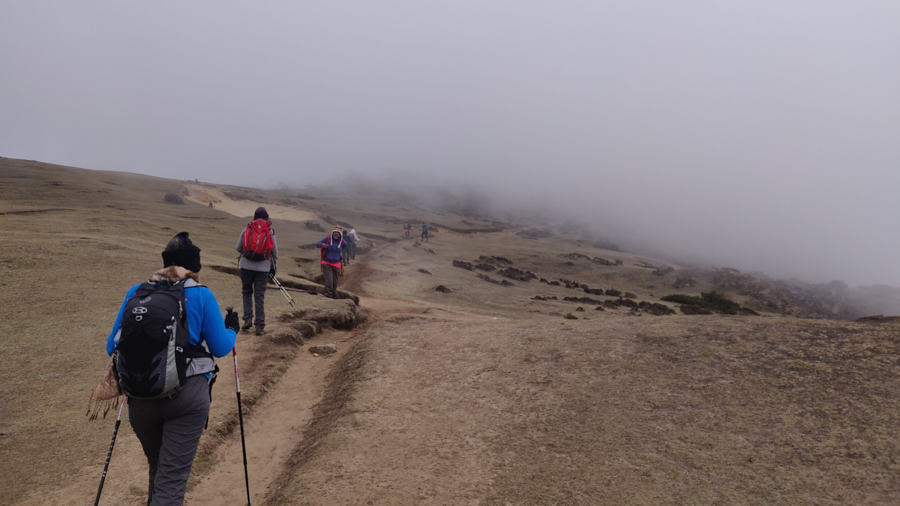
As when we think that the most significant human minds have explored all of the world’s possible mysteries- The sufficiency generating curiosity to go beyond Earth, some of the existing mysteries of Upper Mustang still leave archaeologists bewildered. Housed in the Trans-Himalayan region of Nepal, the kingdom lay forbidden up until two decades back. Besides the polished white landscapes, enthralling mountains, outlandish villages and the sublime remoteness, the presence of more than 10,000 cave complexes add up a mystical charm to Upper Mustang.
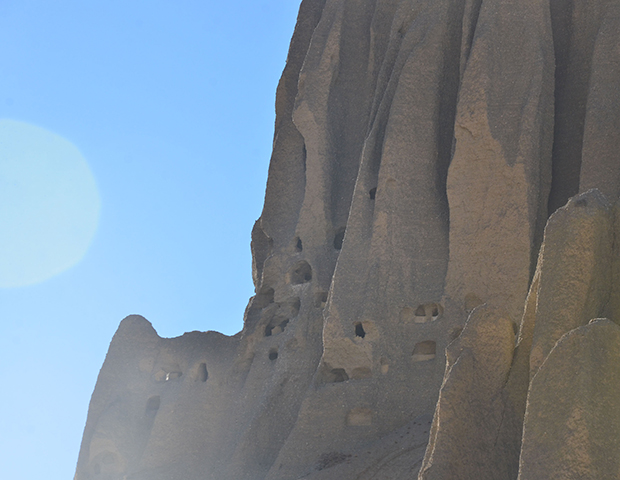
Human beings have a whole ancestral history entangled to caves as that is where the evolution started. Back in the Stone Age, humans were cave people. And the most interesting thing is, Upper Mustang has shreds of evidence of the whole cave civilization attached to it. We can find the multi-storeyed Sky Caves in the hills and cliffs (30 meters and above), which reflects an ancient era of humankind. Whether Lamas used to fly up to the caves (a widespread belief) or not; Or is it the water level that has gone down in thousands of years, is inexplicable. Let’s not sink into that! However, we have compiled a list of purposes that the caves in Upper Mustang might have served from older to the more recent times.
1. Caves systems of Upper Mustang represent a settlement type:
Thousands of years ago, people established settlements in caves. This is because, caves kept people warm, protected from the strong winds and fluctuating temperature in the Himalayas. In later years, humans started to build multi-storeyed cave complexes with different compartments used for various purposes which can be evidently analyzed by studying the remains and more. Also, the connectivity can be seen as the houses in the villages also follow similar structures.
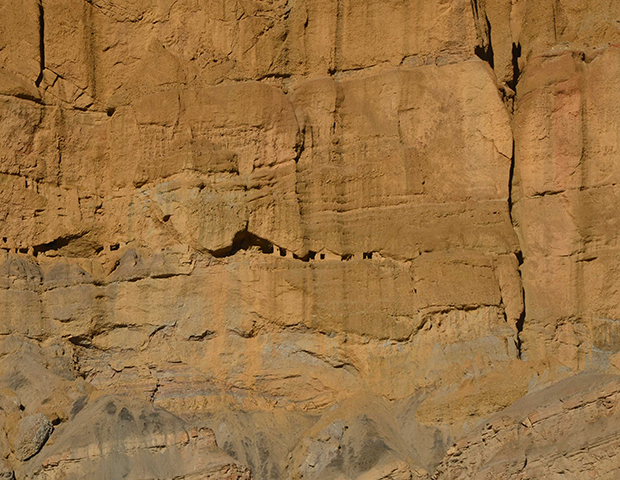
2. People took refuge in the caves of Upper Mustang:
Various folklores state that caves were the place to seek refuge from demons and evil spirits. Also that, the height of the caves were made shorter to avoid the demons from getting access to the caves as the demons couldn’t bend, making people safe. Not sure how true the story is, but another fact about Upper Mustang is that it lies along the ancient Salt Trade Route. And at that time, there used to be constant tension and war in the area. The remains of the ruined towers depict that they used to be the watch towers during the war. Thus, caves were the safest place to hide.
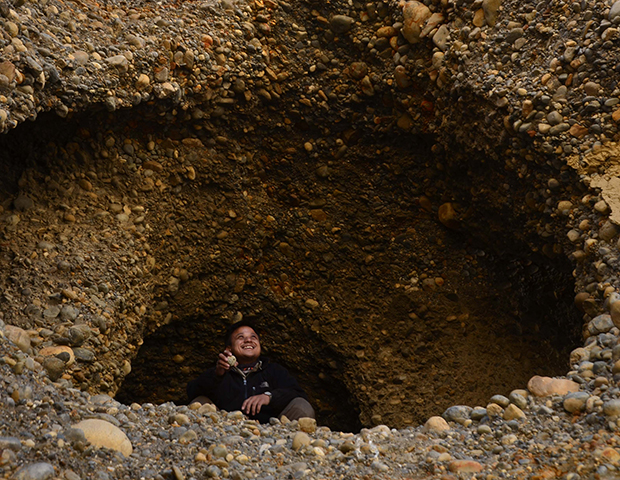
3. Caves were used as a Vault for the Valuables:
Even after people started cultivating lands for food, they used to live in these caves. This is evident as most caves can be seen near the agricultural lands and river basins. The caves also served the purpose of storing grains, valuables like gold and silver, etc. To be precise, it was the safest option to store such precious stuff in the caves for nobody could catch a sight easily.

4. Upper Mustang Caves even served Religious purposes:
Would you believe if I said there are cave temples and cave monasteries in Upper Mustang? Yes, everything we practice in the modern days used to be practiced inside the caves in ancient days. Some of the caves have stupas built inside it, like the ones in Luri and Tashi Kabum. From being a meditating place of the Lamas to the storage site of religious scripts, papers, and valuables, caves served various religious purposes. We can still find cave paintings and scribbles to prove the point. Besides, the performance of Bon practices is also witnessed in the cave monasteries of Upper Mustang.
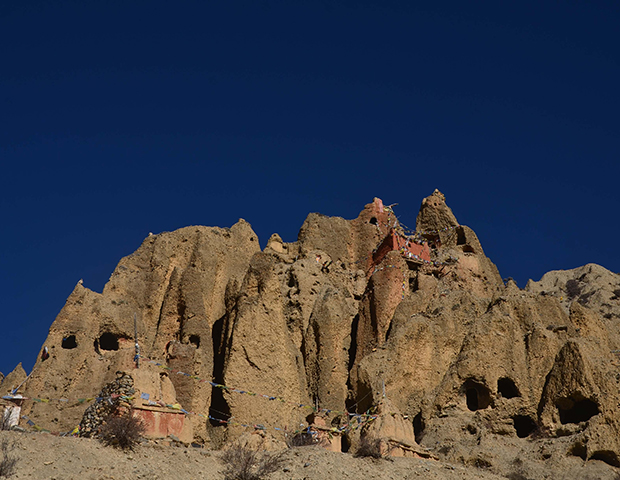
5. Caves of Upper Mustang were used as Burial Sites:
Another astounding fact that can be derived from some of the caves is that the burial practices after death were also performed inside the caves. There are several burial caves in different parts of Upper Mustang too. The Chokhopani burial caves located on the northern banks of Chokhopani Khola, which was excavated in 1992, contained grave goods like pottery, bronze, bones, beads, copper jewelry, etc. Besides, in 1995, several human remains were found in the burial caves of the northern bank of Dzong river along with animal remains ornaments of deceased, beads, bracelets, baskets, utensils, wooden bow, bamboo mugs, pottery, etc. The dead were boxed in carved wooden coffins. However, a very strange practice is that the bodies were first cut into pieces and defleshed before burial. Another burial cave was found in Samjong in 2010, which was an interesting exploration by National Geographic on Mustang caves as 27 individuals were found in simple coffins. However, one of the coffins (probably of a superior person/ lama), which was made of hardwood and painted, wasn’t defleshed (Unlike the rest). The coffin also had remains of a 10-year-old and a horse in it.
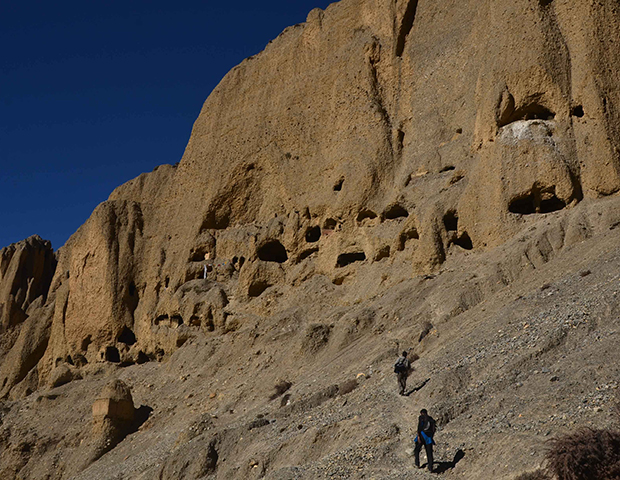
There are many more interesting findings and stories in Upper Mustang. If you want to know more, Subscribe to our newsletter to keep updated with our latest posts!
Also find all the fascinating information about Upper Mustang in our video. And for more videos, you can check out HoneyGuide’s youtube channel.




